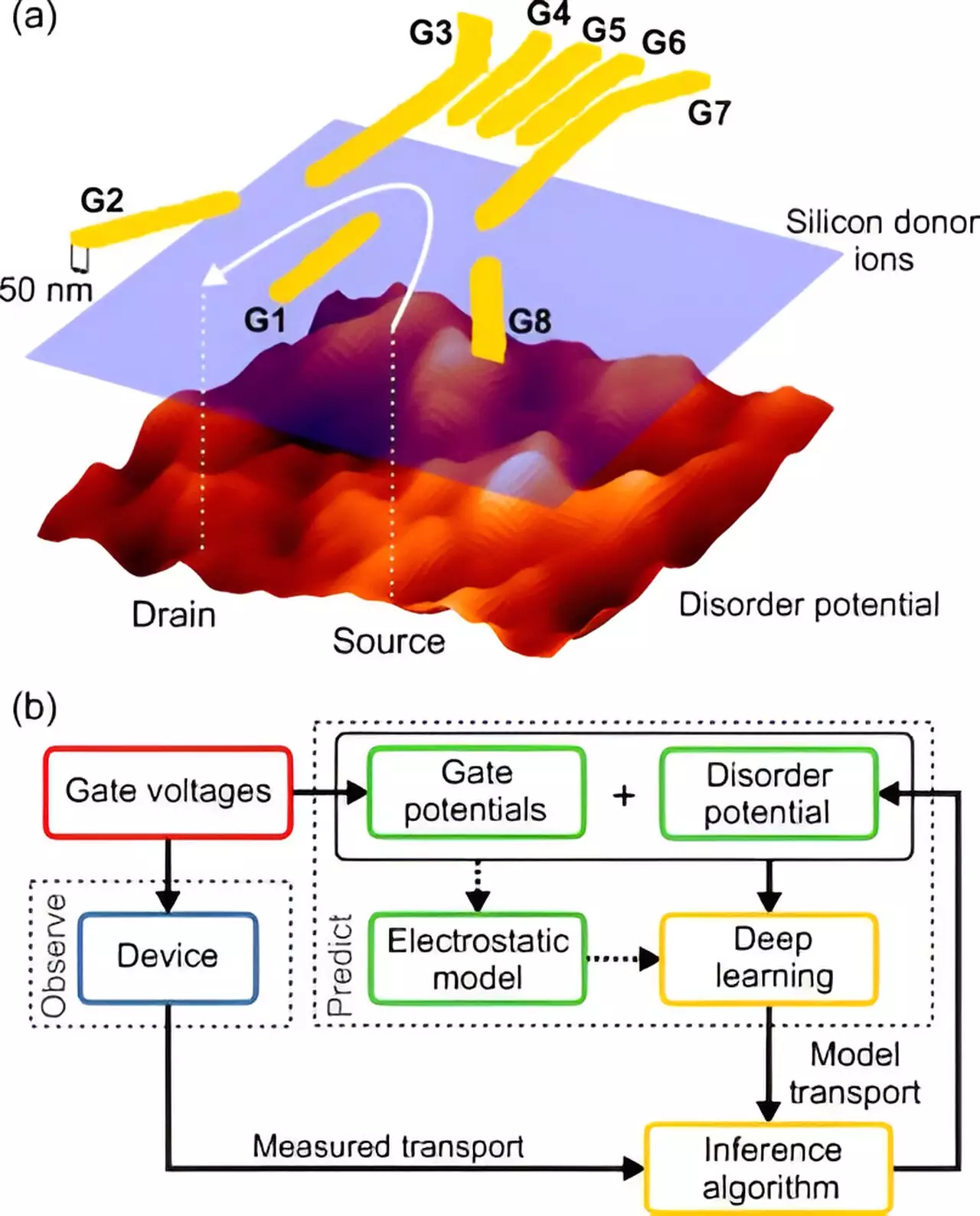Quantum computing has the potential to revolutionize a wide range of fields, from climate modeling to drug discovery. However, one of the major obstacles to achieving practical quantum devices is the inherent variability in their behavior. Even seemingly identical units exhibit different behaviors, making it difficult to scale and combine individual qubits. This variability is believed to be caused by nanoscale imperfections in the materials used to create quantum devices. Unfortunately, there is no way to directly measure these imperfections, resulting in a gap between predicted and observed outcomes.
In a groundbreaking study led by the University of Oxford, researchers have successfully closed the “reality gap” using machine learning techniques. By employing a “physics-informed” approach, the team was able to indirectly infer the characteristics of this internal disorder. They focused on how the disorder affected the flow of electrons through the quantum device. This novel method allowed them to capture the important features of the imperfections, even though they couldn’t directly measure them.
To better understand this approach, the researchers make use of a “crazy golf” analogy. Imagine playing mini-golf, where the ball enters a tunnel and emerges with a speed or direction that doesn’t match our predictions. By taking multiple shots, using a crazy golf simulator, and utilizing machine learning techniques, we can improve our ability to predict the ball’s movements and close the reality gap. Similarly, the researchers employed a series of sensors along the tunnel (quantum device) to gather data on the ball’s speed at different points. This data was then used to make better predictions about the ball’s behavior.
In their study, the research team measured the output current across an individual quantum dot device for different voltage settings. They inputted this data into a simulation, which calculated the difference between the measured current and the theoretical current in the absence of internal disorder. By measuring the current at various voltage settings, the simulation was constrained to find an arrangement of internal disorder that could explain the measurements. This approach combined mathematical and statistical techniques with deep learning algorithms to accurately capture the characteristics of the imperfections.
The results of this study were highly promising. Not only did the new model find suitable internal disorder profiles to describe the measured current values, but it also accurately predicted the voltage settings required for specific device operating regimes. This breakthrough model provides a new method to quantify the variability between quantum devices, enabling more accurate predictions of their performance. Moreover, it can assist in engineering optimum materials for quantum devices and inform compensation approaches to mitigate the effects of material imperfections.
With the reality gap substantially closed, the future of quantum computing looks brighter than ever. The pioneering use of machine learning in overcoming the challenges of quantum devices paves the way for advancements in various fields. From climate modeling to financial forecasting, drug discovery, and artificial intelligence, the potential applications of quantum computing are vast. As researchers continue to refine and improve upon the techniques used in this study, we can expect quantum devices to become increasingly reliable and impactful.
The power of machine learning has been harnessed to tackle a crucial challenge in quantum computing. By leveraging a physics-informed approach and combining mathematical and statistical techniques with deep learning algorithms, researchers have successfully closed the reality gap. This breakthrough allows for more accurate predictions of quantum device behavior and opens up new possibilities for the application of quantum computing in numerous fields. As we continue to unravel the mysteries of the quantum world, the future of technology seems poised for extraordinary advancements.


Leave a Reply